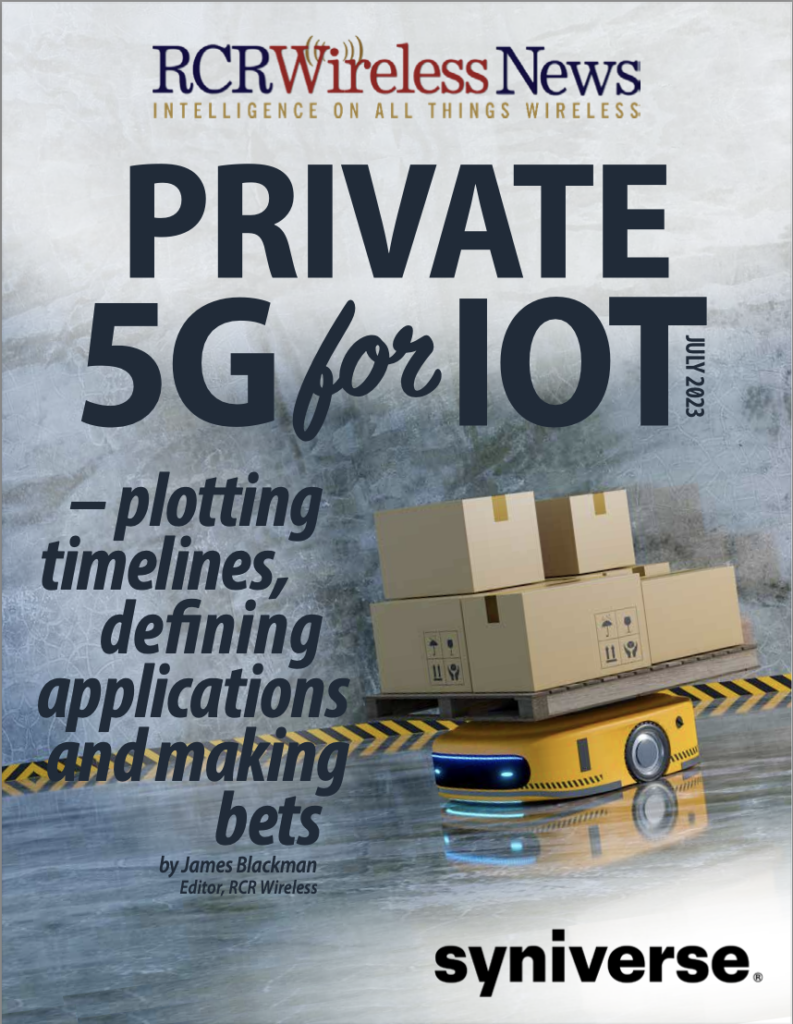Private 4G and 5G networks present enterprises with advanced options for connectivity by combining the higher performance, reliability and security of cellular technology with the practicality and control of local Wi-Fi infrastructure. They give rise to new and improved enterprise applications, ranging from better on-site coverage for everyday enterprise devices and novel sensor technologies, through fool-proof mobility for autonomous vehicles and robots (AGVs and AMRs), to transformative augmented reality (AR) cases for remote worker assistance.
With ongoing development of the 5G standard, they stand to offer even more: a high-fidelity control network for enterprises to launch their own private industrial revolutions, and to transform the global economy along the way. But in all of the excitement, something is lost; because private 4G and 4G networks have been generally conceived and deployed as isolated standalone endeavors, more or less like enterprise Wi-Fi networks. This is the case in Industry 4.0, especially – where enterprises are characterized as (justifiably) paranoid control freaks.
They are, with good reason, inclined to lock-down trade secrets and intellectual property, and make security the principal of IT/OT system design. But this whole concept of industrial isolationism is flawed; no enterprise is an island, clearly, and construction of network bridges to map supply-chain flows does not have to compromise security. In other words: private networks will not exist just as island networks within enterprises, entirely disconnected from the cloud, and entirely-separate of global network infrastructure.
There are just as many use cases that require interoperability between private networks in enterprise venues and public networks running across countries, and all around the globe. Most of these are to do with asset tracking (and monitoring), in one form or another; but asset tracking is the ‘king’ use-case for IoT, just because everything that goes in and out of a private enterprise is an asset – from laptops and smartphones, to workers and contractors, to all the materials and products in the supply-chain cycle (and all of the different vehicles and containers to carry them).
The industry is waking up to this now, as private networks are deployed and enterprise workloads are attached to them. The challenge to move as seamlessly between private enterprise networks and public carrier networks as between cellular and Wi-Fi is not straightforward. Traditionally, it required multiple roaming agreements and the creation of multiple interconnections with mobile network operators. But such an approach quickly becomes costly and time-consuming – and, in the end, goes nowhere.
More technically, the issue is for SIM-based devices, including general consumer devices and sundry IoT modules, to roam from micro to macro networks and back again. Roaming out of a private network is simpler: the device scans for and attaches to a public network when the private-network signal is lost, and device data is retained in a secure cloud-based enterprise application. The trick is coming back the other way, where macro coverage overlaps the enterprise locale, and the device is not prompted to scan for a private network. But it can be done.
US-based carrier services company Syniverse, also offering global virtual-network (MVNO) roaming for IoT services, has designed a patented mechanic to recognize a SIM that originated on a private network and take action to automatically drop the public carrier connection when in range of its host enterprise, or designated supply-chain enterprises, in favor or a local private-network connection. Syniverse is offering this integrated private/public IoT data service via an open roaming hub, providing carrier roaming access for local IoT devices across 200 countries.
Enterprises can set the roaming parameters on public networks to suit their ends; so their IoT devices automatically select carrier networks according to pre-set performance criteria, such as network latency, coverage, or cost. It sounds like a niche factory or warehouse application; but it is not. As with the two-speed private networks market in general, which is developing very well to support more general purpose connectivity inside communal campus areas, such as office parks or airports, or other venues, there are private/public roaming applications everywhere you look.
Syniverse gives the example of a university campus: a private 4G broadband network is deployed for students and staff, offering higher data throughput and security for them to leverage a restricted academic curriculum, such as lesson plans and research papers, and so on; but, as any good student knows, the learning does not stop at the campus gate, but goes home with you, into the wee small hours, where only a public mobile network will deliver the content.
The two-way Syniverse roaming solution supports this scenario, ensuring the original service level agreements around security and privacy are maintained, even as the essential service roams across hybrid (global) private/public infrastructure – just as it supports the pallet going from factory to warehouse, the new car rolling off the ferry and into the showroom, the remote specialist live-streaming support en route to a blowout, and so on and so forth. In the end, done right, it is public LTE and 5G infrastructure that will make many private LTE and 5G applications valuable.
For more from Syniverse, check out the new editorial report and webinar (both available to download / stream for free) on Private 5G for IoT. The report is available here, or by clicking on the image below; the webinar is available here.


